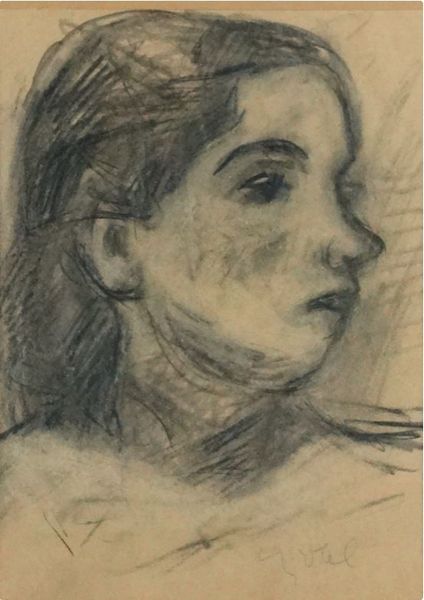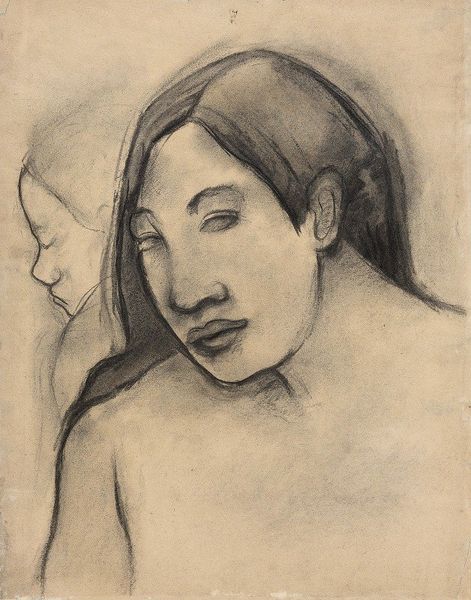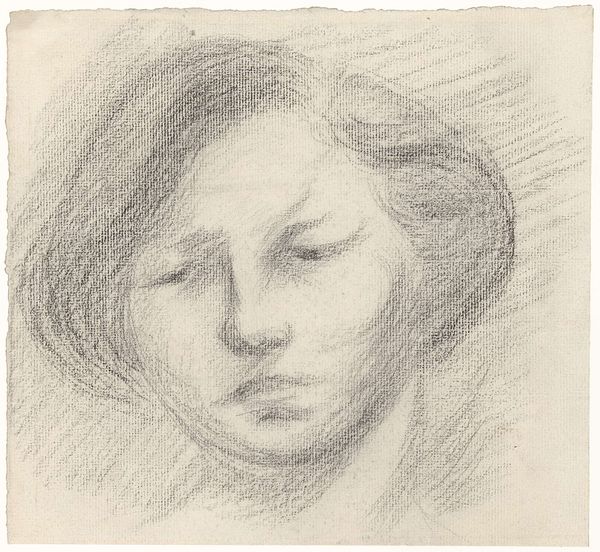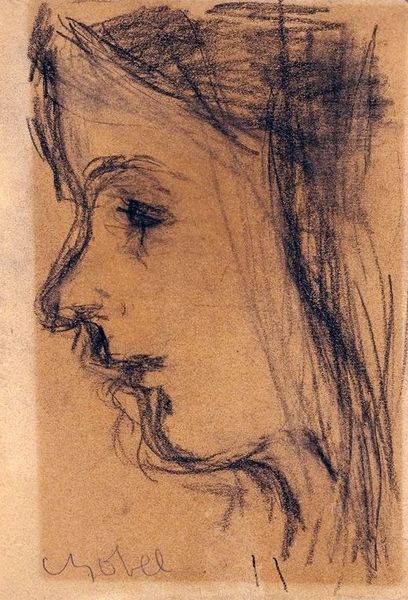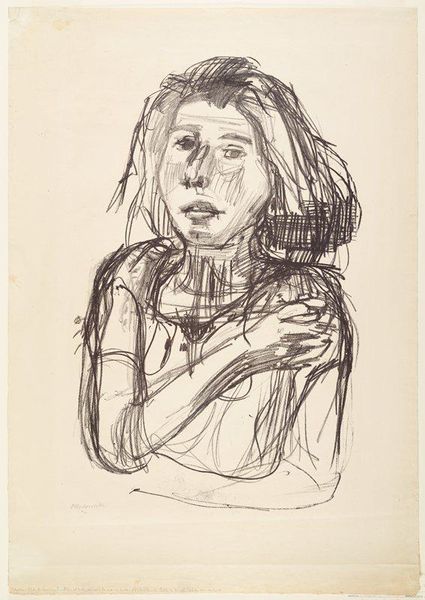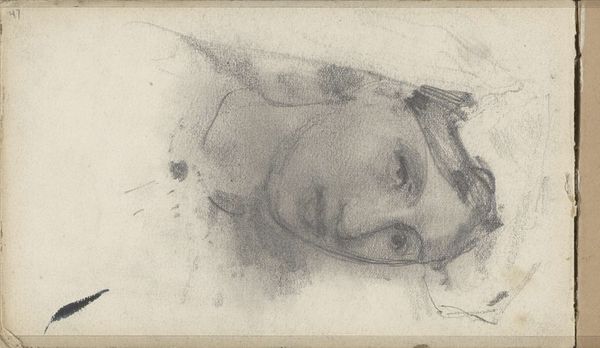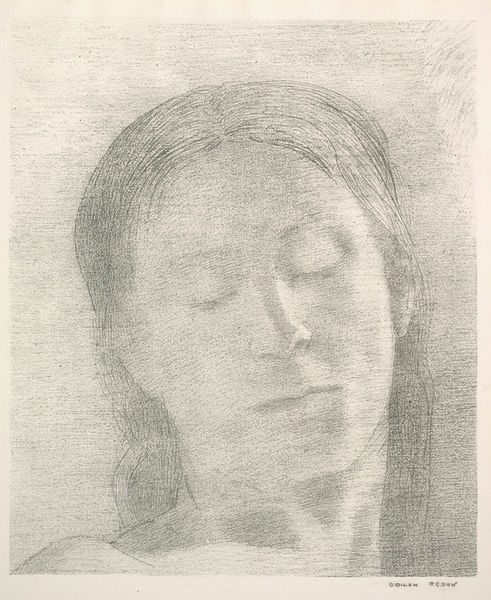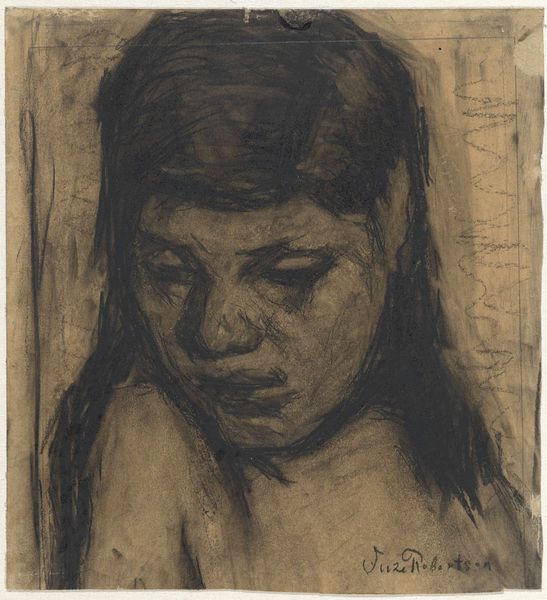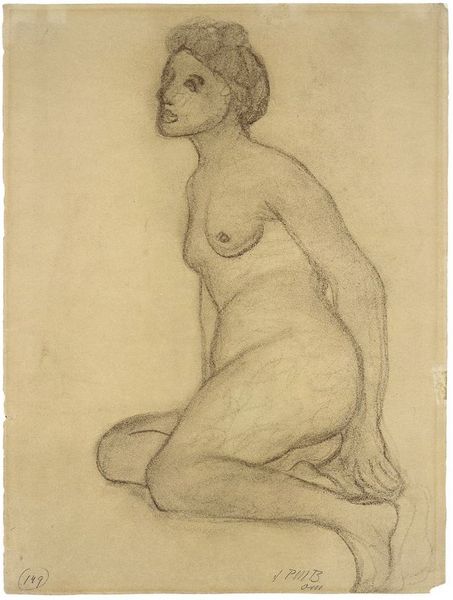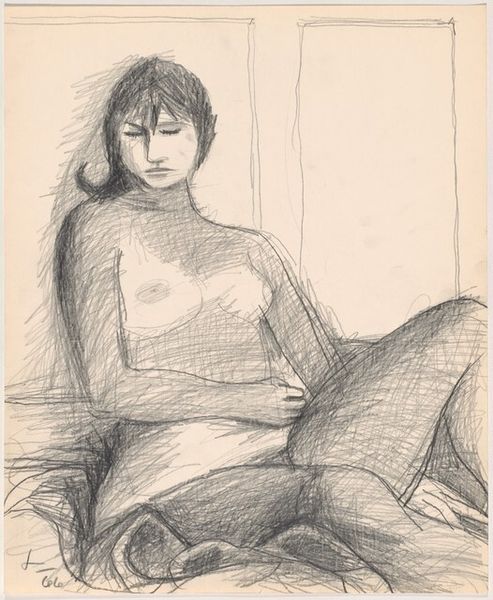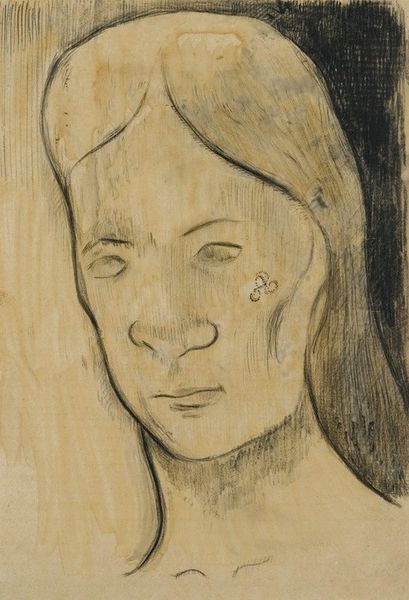
drawing, charcoal
#
portrait
#
drawing
#
asian-art
#
charcoal drawing
#
figuration
#
portrait drawing
#
charcoal
#
post-impressionism
Copyright: Public Domain: Artvee
Paul Gauguin’s charcoal drawing 'Tahitian Faces' presents us with a study in contrasts and perspectives. Dominating the composition is the forward-facing visage of a Tahitian woman, her eyes gently closed, rendered with a soft, almost dreamlike quality. Around her, Gauguin sketches additional profiles, each overlapping and emerging from the other. The use of charcoal allows for a rich play of light and shadow, giving depth to the faces while simultaneously flattening the picture plane. This interplay embodies a tension between representation and abstraction. Gauguin uses the formal properties of the charcoal medium, its ability to create both delicate lines and smudged textures, to challenge fixed modes of seeing. By presenting multiple perspectives simultaneously, Gauguin suggests that identity and perception are fluid, defying singular interpretation. The formal qualities of the work—the layering, the erasure, the stark contrast of black and white—invite us to consider the multiplicity of meaning and the instability inherent in representation itself.
Comments
No comments
Be the first to comment and join the conversation on the ultimate creative platform.

